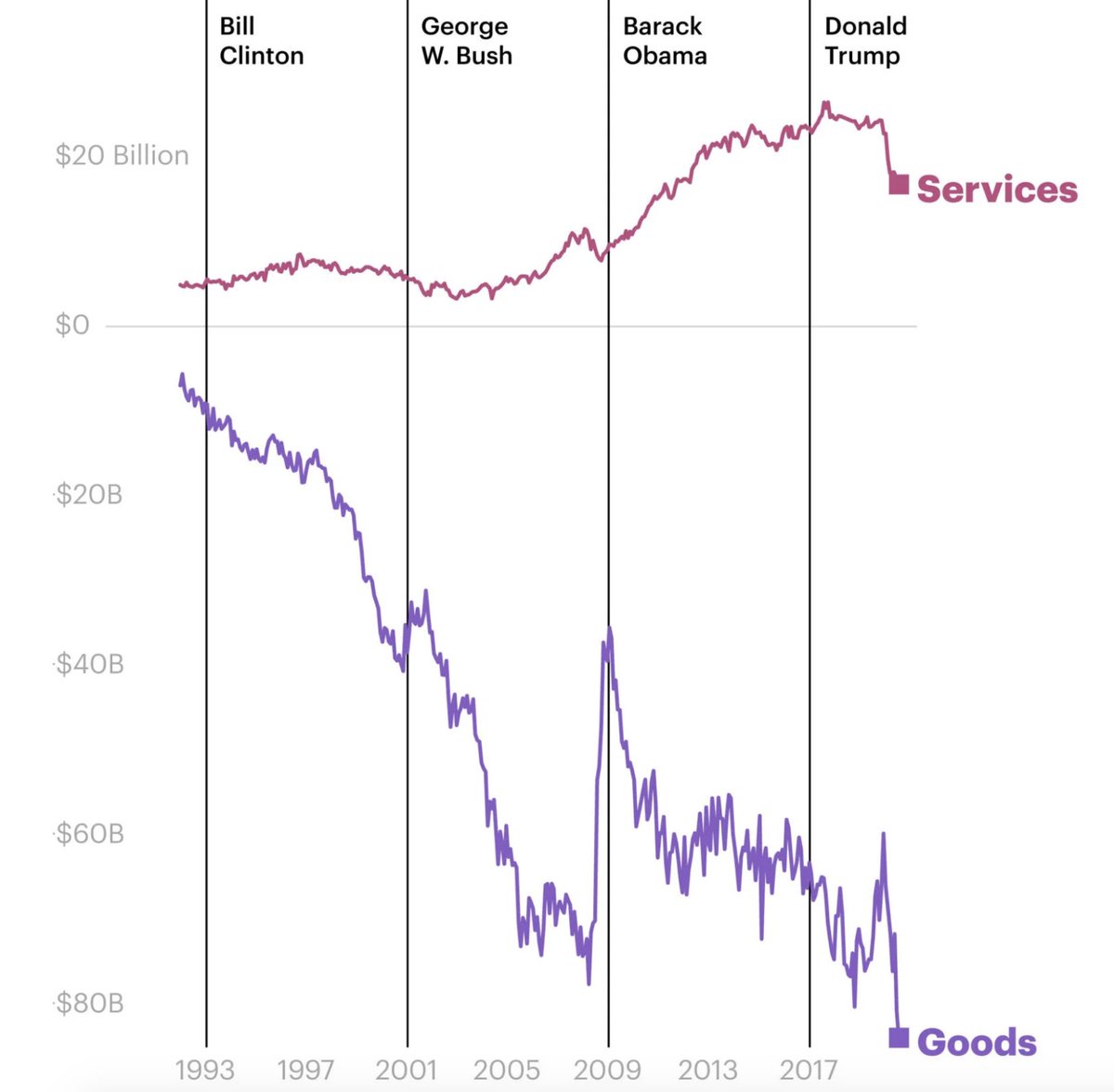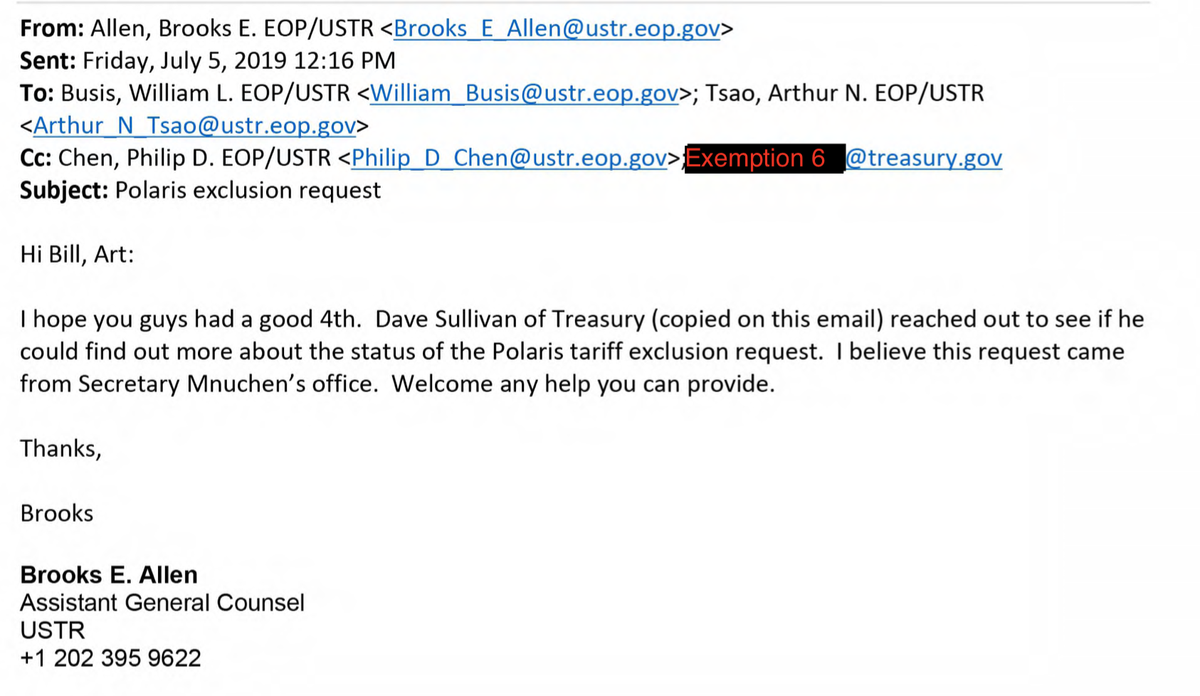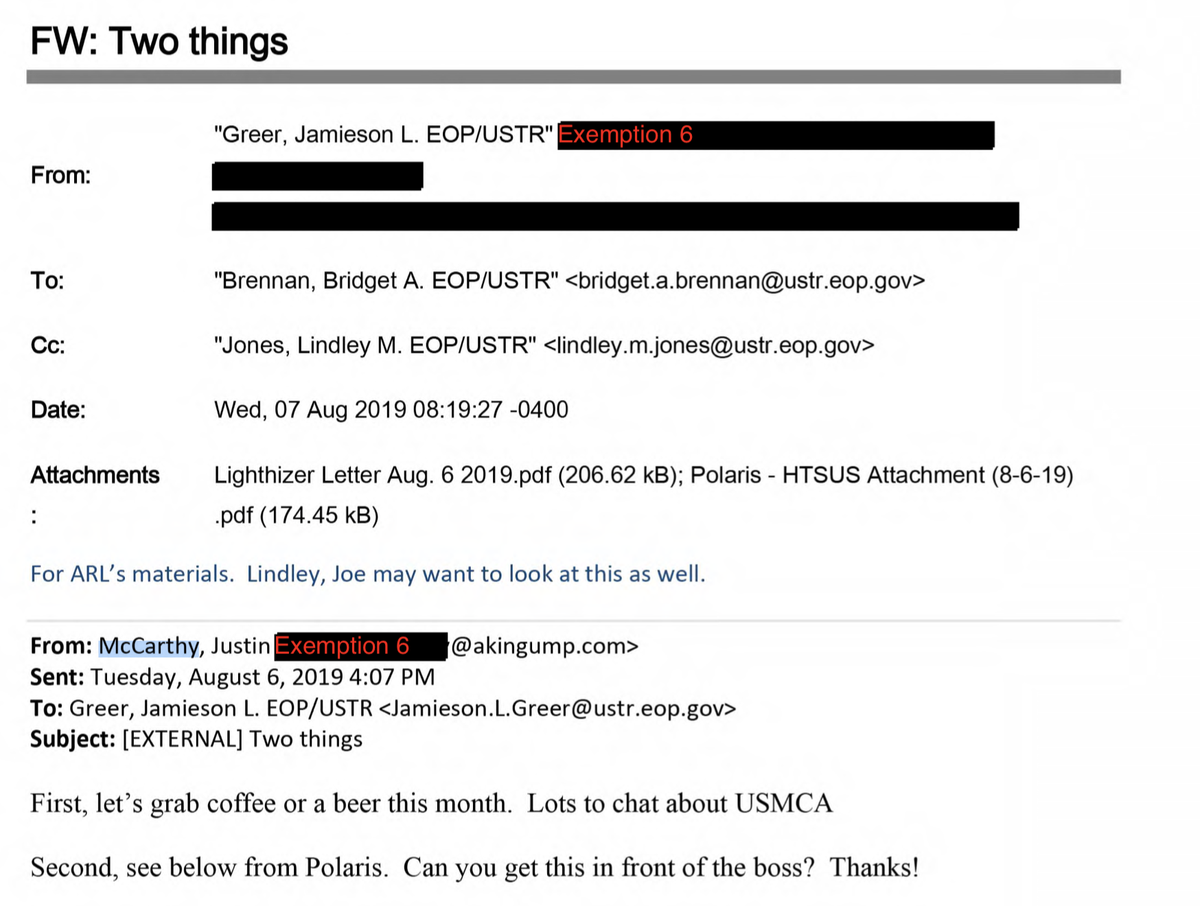
NEW: By Trump’s own benchmarks, his approach to trade hasn’t worked. Here’s my story about what he set out to do, the guy he chose to do it, the agency that carried it out, and the result so far. It’s the most complex, hard-to-balance piece I’ve ever written. This is why. 1/
I talked to dozens of former & current USTR employees, their foreign counterparts, and interest groups. USTR has long been seen as a special agency. Consistently across administrations, about 250 experts & lawyers considered it their mission to break down trade barriers overseas.
Enter Robert Lighthizer, probably the perfect person to carry out Trump’s agenda. He shared the president’s views, but had a much deeper understanding of arcane trade law and how negotiations work from his decades representing the steel industry. 3/ 

But from the start, Lighthizer was hampered by the impetuous tendencies of his boss, who alienated allies and was so relentlessly focused on trade deficits and tariffs that American diplomats had little room to maneuver. Many said they lost credibility with negotiating partners.
Lighthizer earned a grudging respect for his professionalism & skill, but many career staff said that decisionmaking was concentrated in a small group around him. Some couldn’t bear the confrontational attitude they were forced to bring to relationships with allies. 5/
They wanted to believe that the get-tough approach would work. And it did send a signal to corporate America that sending jobs to China would no longer be easy. But so far, those jobs have flowed instead to China’s neighbors, not the U.S., as companies sought to avoid tariffs. 6/
If you look at the difference between America’s exports and its imports—which is what Trump does—the approach hasn’t worked. Manufacturing output and employment flatlined in 2019 as retaliatory tariffs took a toll, as did the duties on imports needed to make U.S. products. 



As for China, which targeted U.S. agricultural industries with retaliatory tariffs: The “phase 1” deal avoided most of the hard issues and there likely won’t be a phase 2. China is far behind on its promised $200 billion in purchases, so few U.S. businesses are better off. 8/
Re-negotiating NAFTA was a Lighthizer triumph in that it made enough upgrades to labor standards that Democrats felt like it set a new bar for future trade deals. Many found Lighthizer’s dismissive approach to business, which is used to running trade policy, refreshing. 9/
Congress is annoyed that the administration hasn’t sought its approval for its other “mini-deals” with other countries, which means they could essentially be ripped up by the next administration. But lawmakers haven’t taken any steps to curtail the White House’s trade powers. 10/
Meanwhile, Lighthizer essentially drove out the head of the WTO and strangled its highest judicial body, leaving it unable to arbitrate disputes. While previous administrations had problems with the WTO, it’s unclear whether the version that emerges from this will solve them. 11/
(USTR says that multiple headwinds were impacting manufacturing, that its China deal made important advances in market access for U.S. crops and other products that will pay off over the long run, that it still pursues WTO cases, and that Lighthizer values staff input.) 12/
Anyway, we’re left with a profoundly shifted landscape in trade politics and policy, with few tangible benefits so far. Theoretically, that could change, if the disruption persuades more companies to make their goods domestically over the long term. But that’s far from certain.
That’s the short version of the story I’m trying to grapple with here, which will probably be the subject of multiple books. Here’s the longer version: propublica.org/article/robert…
If you're a trade professional with insight on the consequences of all this, I'd be interested in your thoughts -- drop me a note at lydia.depillis@propublica.org, or I'm at 202-913-3717 on Signal.
And my colleagues put out amazing work every damn day. If you want more of ProPublica’s best stuff, sign up for our Big Story newsletter: go.propublica.org/bigstory-social
• • •
Missing some Tweet in this thread? You can try to
force a refresh








